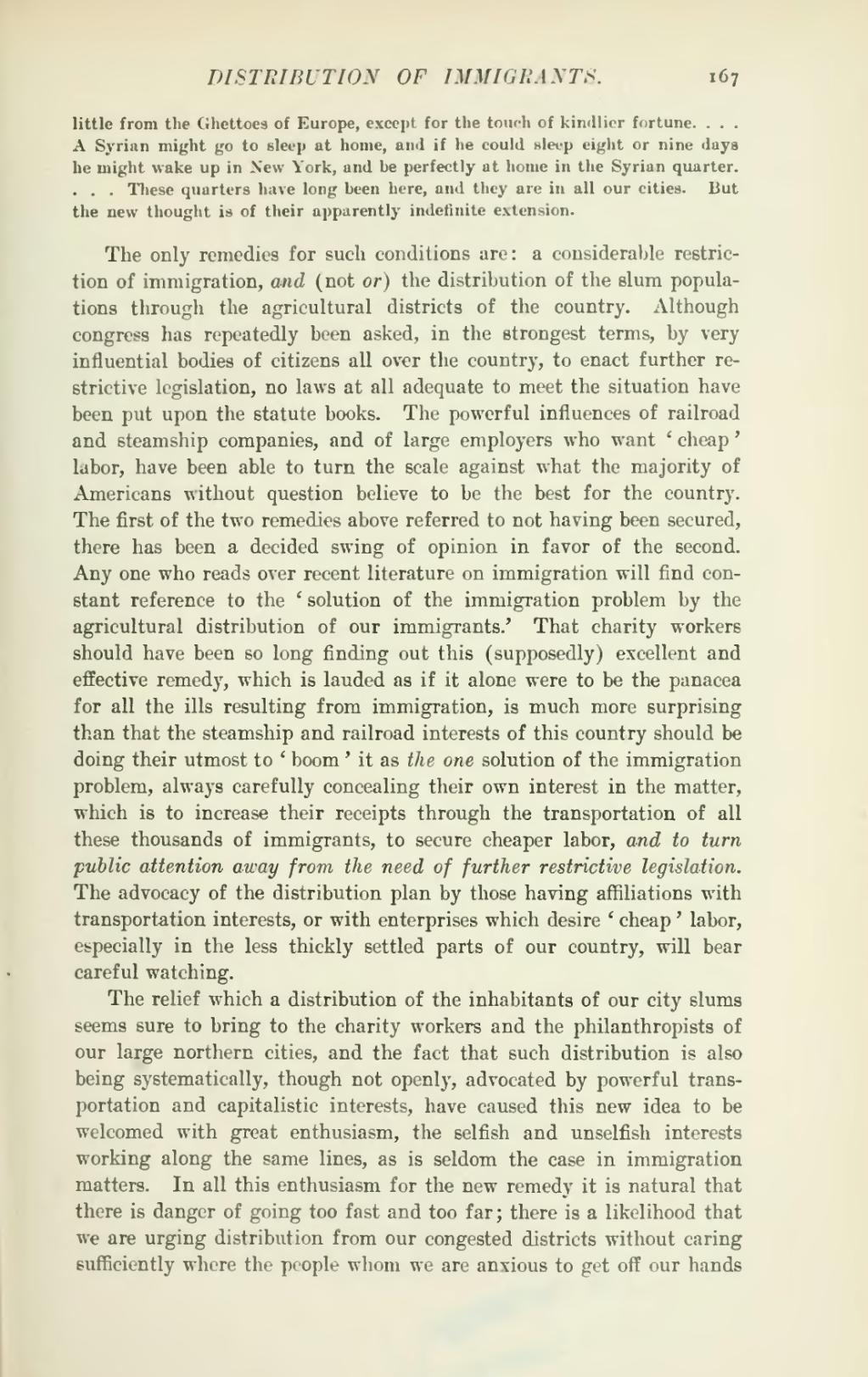The only remedies for such conditions are: a considerable restriction of immigration, and (not or) the distribution of the slum populations through the agricultural districts of the country. Although congress has repeatedly been asked, in the strongest terms, by very influential bodies of citizens all over the country, to enact further restrictive legislation, no laws at all adequate to meet the situation have been put upon the statute books. The powerful influences of railroad and steamship companies, and of large employers who want 'cheap' labor, have been able to turn the scale against what the majority of Americans without question believe to be the best for the country. The first of the two remedies above referred to not having been secured, there has been a decided swing of opinion in favor of the second. Any one who reads over recent literature on immigration will find constant reference to the 'solution of the immigration problem by the agricultural distribution of our immigrants.' That charity workers should have been so long finding out this (supposedly) excellent and effective remedy, which is lauded as if it alone were to be the panacea for all the ills resulting from immigration, is much more surprising than that the steamship and railroad interests of this country should be doing their utmost to 'boom' it as the one solution of the immigration problem, always carefully concealing their own interest in the matter, which is to increase their receipts through the transportation of all these thousands of immigrants, to secure cheaper labor, and to turn public attention away from the need of further restrictive legislation. The advocacy of the distribution plan by those having affiliations with transportation interests, or with enterprises which desire 'cheap' labor, especially in the less thickly settled parts of our country, will bear careful watching.
The relief which a distribution of the inhabitants of our city slums seems sure to bring to the charity workers and the philanthropists of our large northern cities, and the fact that such distribution is also being systematically, though not openly, advocated by powerful transportation and capitalistic interests, have caused this new idea to be welcomed with great enthusiasm, the selfish and unselfish interests working along the same lines, as is seldom the case in immigration matters. In all this enthusiasm for the new remedy it is natural that there is danger of going too fast and too far; there is a likelihood that we are urging distribution from our congested districts without caring sufficiently where the people whom we are anxious to get off our hands

